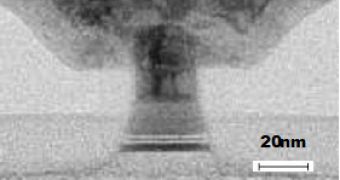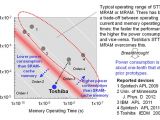Random access memory already benefits from a high degree of energy efficiency, but there is always room for improvement, something that Toshiba has actively been searching for.
MRAM (magnetoresistive random access memory) is a next-generation memory based on magnetic materials and has emerged as an alternative to SRAM (static random access memory).
SRAM has been doing fine as cache memory solution, so far, but there isn't much room for improvement anymore, not enough to match the advancements in other hardware areas.
There is also the problem of energy leakage during operation and standby mode, degrading performance-per-watt.
Toshiba hopes to completely circumvent this problem by promoting magnetoresistive random access memory.
In fact, the company has just released a prototype memory element for a spin transfer torque magnetoresistive random access memory (STT-MRAM), one that “achieves the world's lowest power consumption yet reported.”
Power consumption is reduced by 90% compared to previous STT-MRAM chips, which is a great jump from MRAM consuming more energy than SRAM.
A highly accurate processor simulator, as Toshiba called it, tested the new memory element by integrating the memory as cache memory. Power consumption in a standard mobile chip was cut by two thirds.
PCs aren't bound to use MRAM all that soon, with or without the new element, but smartphones and tablets do need fast memory to supply the main CPU with essential instructions and frequently used data. Since MRAM can finally be as good, if not better, than SRAM while consuming less energy, it wouldn't make much sense not to use it.
“The improved structure is based on perpendicular magnetization and takes element miniaturization to below 30 nm. Introduction of this newly designed 'normally-off' memory circuit with no passes for current to leak into cuts leak current to zero in both operation and standby without any specific power supply management,” Toshiba explains.

 14 DAY TRIAL //
14 DAY TRIAL // 
